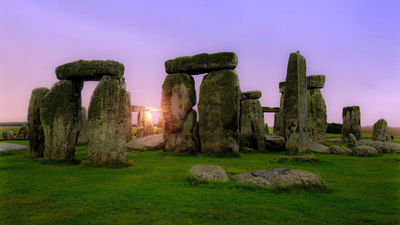Analysis of ``pollen'' provides clues to the lost tributaries of the Nile River used to transport goods in the construction of the pyramids

Nile waterscapes facilitated the construction of the Giza pyramids during the 3rd millennium BCE | PNAS
https://doi.org/10.1073/pnas.2202530119
Khufu branch of Nile River once flowed close enough to Giza to carry the stones needed to build the pyramids
https://phys.org/news/2022-08-khufu-nile-river-giza-stones.html
Vanished arm of Nile helped ancient Egyptians transport pyramid materials | Live Science
https://www.livescience.com/giza-pyramids-built-nile-high-water
A Long-Lost Branch of the Nile Helped in Building Egypt's Pyramids - The New York Times
https://www.nytimes.com/2022/08/30/science/pyramids-nile-river-construction-egypt.html
Various studies have been conducted so far on the construction of the Great Pyramid of Giza by the ancient Egyptians and the method of transporting megaliths. In recent years, from the testimony left on the papyrus by the officials of the time, the theory that stones were transported using a tributary of the Nile River called 'Khufu branch' is influential. 'When I read about it, it confirmed that the building materials for the pyramids were transported by water,' said lead author Hader Sheisha of the University of Aix-Marseille . increase.
It was recorded in the site director's diary that the pyramid was built by the force of the Nile River and large-scale civil engineering work - GIGAZINE

The modern pyramid is about 6 to 7 km away from the banks of the Nile River, and the Khufu tributary no longer exists, so it is difficult to know the exact environment in 2500 BC when the pyramid was built. Therefore, international research teams such as France, China, and Egypt focused on 'pollen deposited in the soil' as a clue to understand the Khufu tributary at that time.
In May 2019, the research team collected sediment cores by excavating the ground for more than 30 feet (about 9 m) at five points along the route where the Khufu tributaries were supposed to have extended from the Nile River to the Pyramids. Taking it back to a French lab, Sheisha and colleagues analyzed various pollen grains in sediments from thousands of years ago. For example, if pollen from Cattail or papyrus is found, it is highly likely that the surrounding area at that time was a wetland-like environment with abundant water. It is suggested that the surrounding area was dry at the time. In addition, the amount of pollen is also a clue to infer the surrounding water environment.
As a result of the analysis, it turned out that the area around Giza around 6000 BC, which was also called the African Humid Period (Green Sahara) , was covered with water. The water level gradually declined over the next several thousand years, but even around 2500 B.C. when the pyramids were built, the Khufu tributary maintained 40% of its peak water level. That was enough, the researchers argue. The water level of the Khufu tributary continued to decrease after that, and it is estimated that it was almost dry around 400 BC.
' During the 4th dynasty (when the pyramids were built), the Khufu tributary was a natural canal,' Sheisha said. Without it, building the pyramids would have been very difficult, if not impossible.'

Related Posts:






